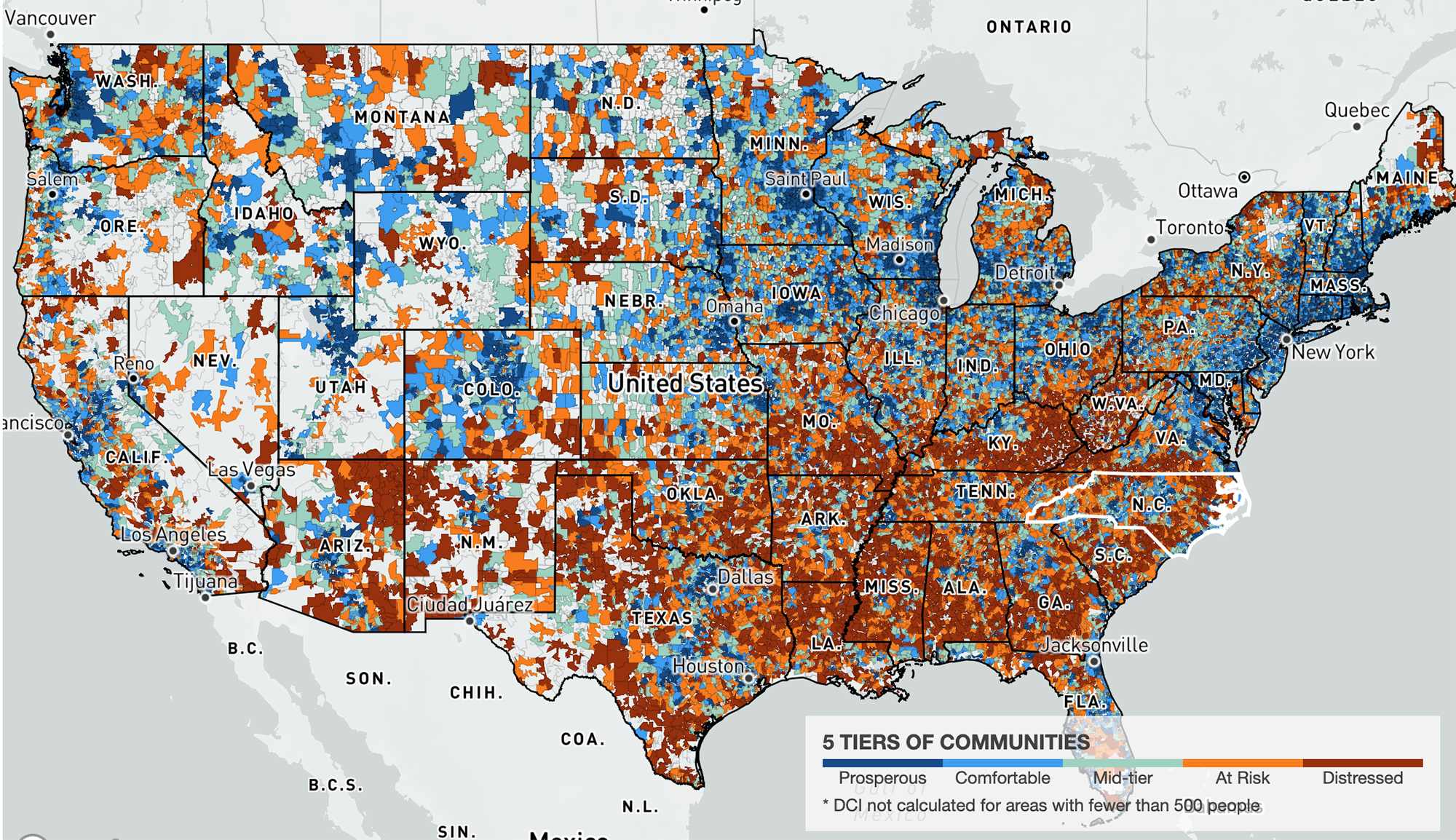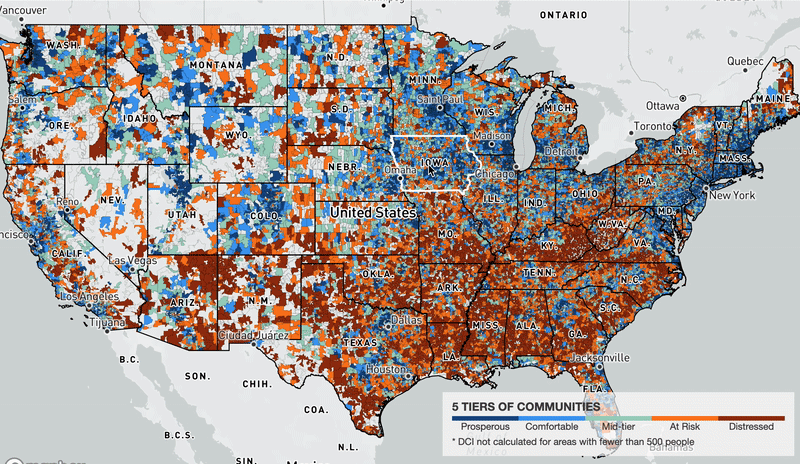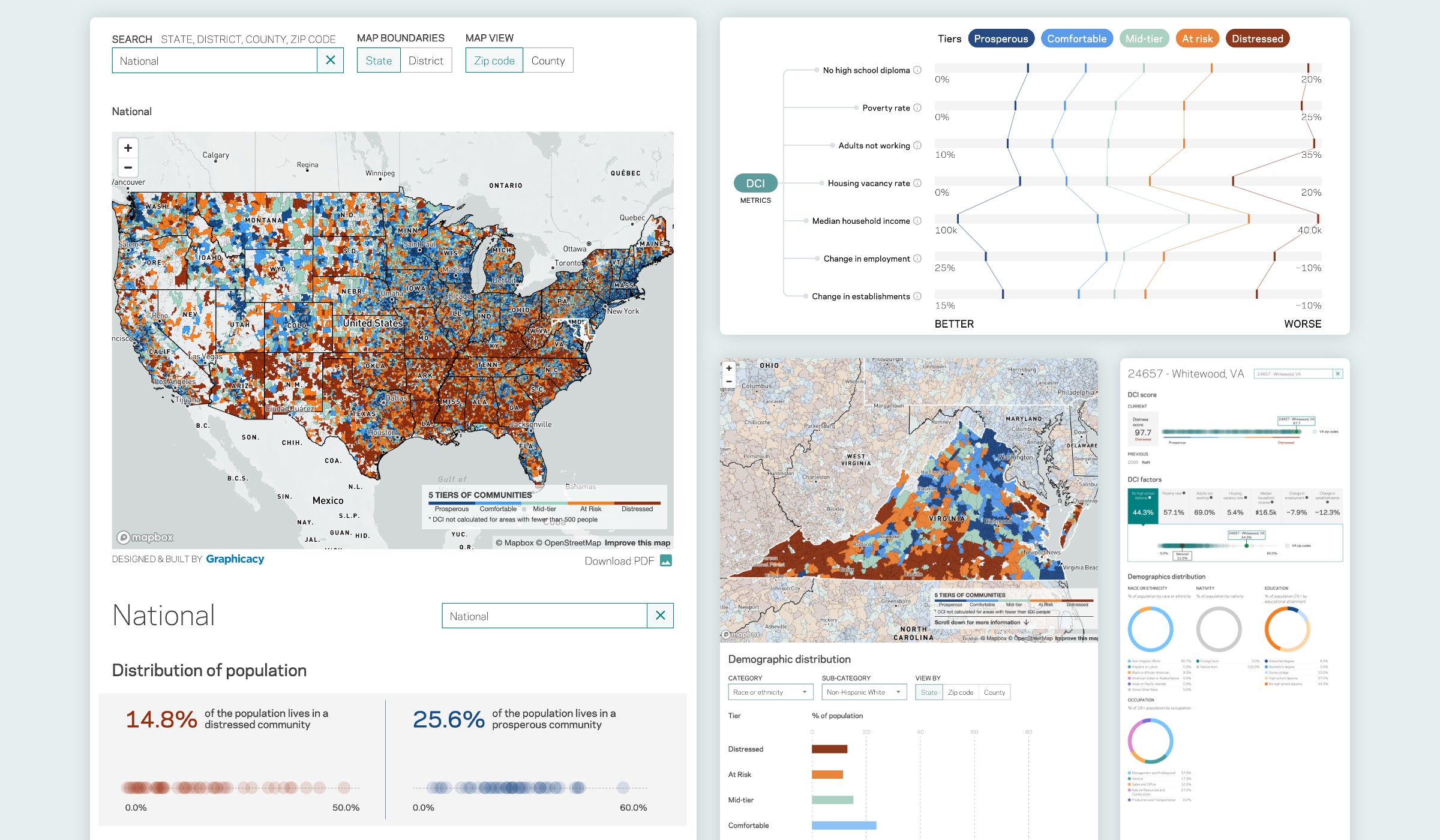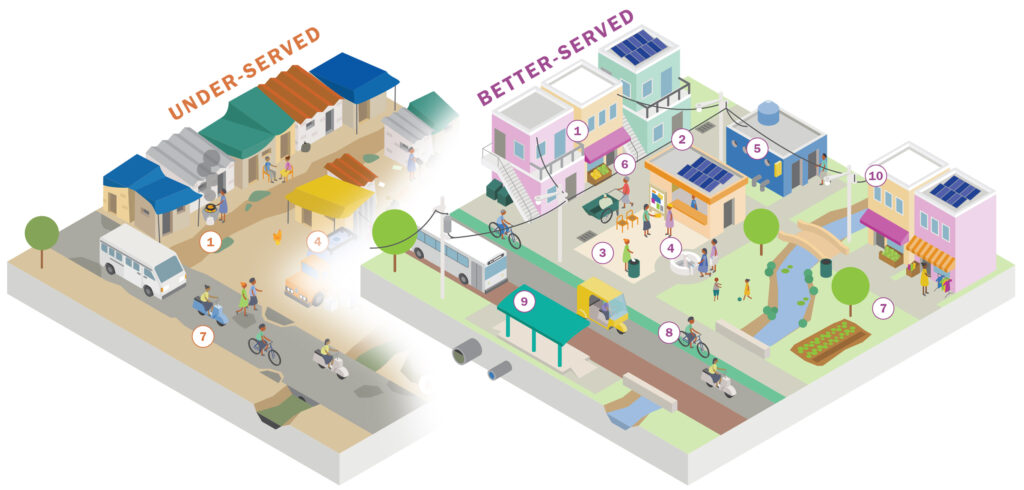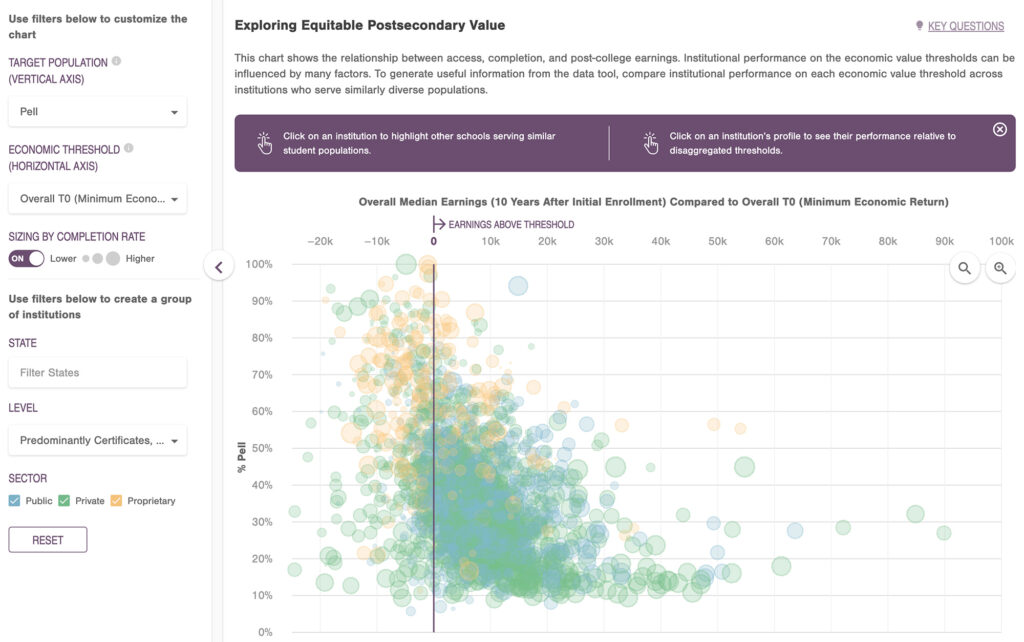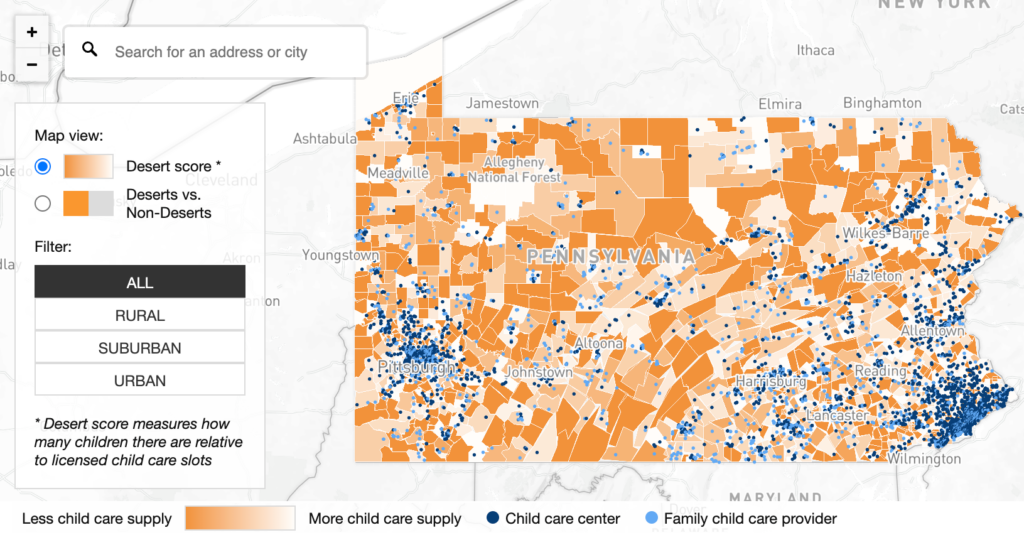“As an advocacy group, well-presented data is our currency,” said Kenan Fikri, EIG’s director of research and policy development. “Congressional representatives don’t usually see granular data comparing their district to others in the state, region, and country. We knew the DCI could be the ideal conversation starter on where and why we need to build a more inclusive economy.”
Throughout the project, Graphicacy and EIG participated in a series of ideation sessions to explore ways to contextualize the data and tell a more human story. These sessions culminated in a data explorer tool featuring charts, slide bars, and other interactive elements to enable easy comparisons among neighborhoods. Simple distribution and bar charts added helpful, supportive context to the data displayed on the large map.
The data itself proved to be an exciting – and complex! – challenge to overcome. Graphicacy designers and engineers approached the Index as users would, tracing the typical journeys people from the report’s target audience would take while using the map. Understanding where users go, what they look for, and what they can or cannot find proved imperative to developing a more intuitive experience.
With the help of Mapbox’s robust developer tools, Graphicacy then parsed EIG’s monolithic dataset into more than 150 individual files. Engineers also gathered shapefiles to create map tiles for all four geography views that would render as requested and retain their shape at every zoom level. Breaking down files into smaller pieces ensured speedier load times since only the data required for a user’s requested view would download at any time.
To solve the riddle of showing four geographic maps at once, Graphicacy created two map toggles: one to highlight congressional district boundaries and one that switches the view from zip code-level to county-level data.
